Pelješac, Croatia's second-largest peninsula, is a hidden gem waiting to be explored on your next luxury yacht charter. Nestled on the southern coast between Split and Dubrovnik, this stunning locale offers a unique blend of natural beauty, rich history, and exquisite culinary experiences – all best enjoyed from the deck of your private yacht. Stretching 65 kilometers from Ston to Cape Lovište, Pelješac boasts a dynamic Mediterranean climate that nurtures Croatia's most prized possession: wine.
Why Choose Pelješac for Your Croatia Yacht Charter?
The mountainous mesoclimate and abundant sunshine create a viticulture paradise, making Pelješac famous for its wines like Plavac Mali and Postup. But beyond the vineyards, Pelješac offers secluded anchorages, charming coastal towns, and unforgettable experiences perfect for a sailing vacation.
A Journey Through Time: The History of Pelješac
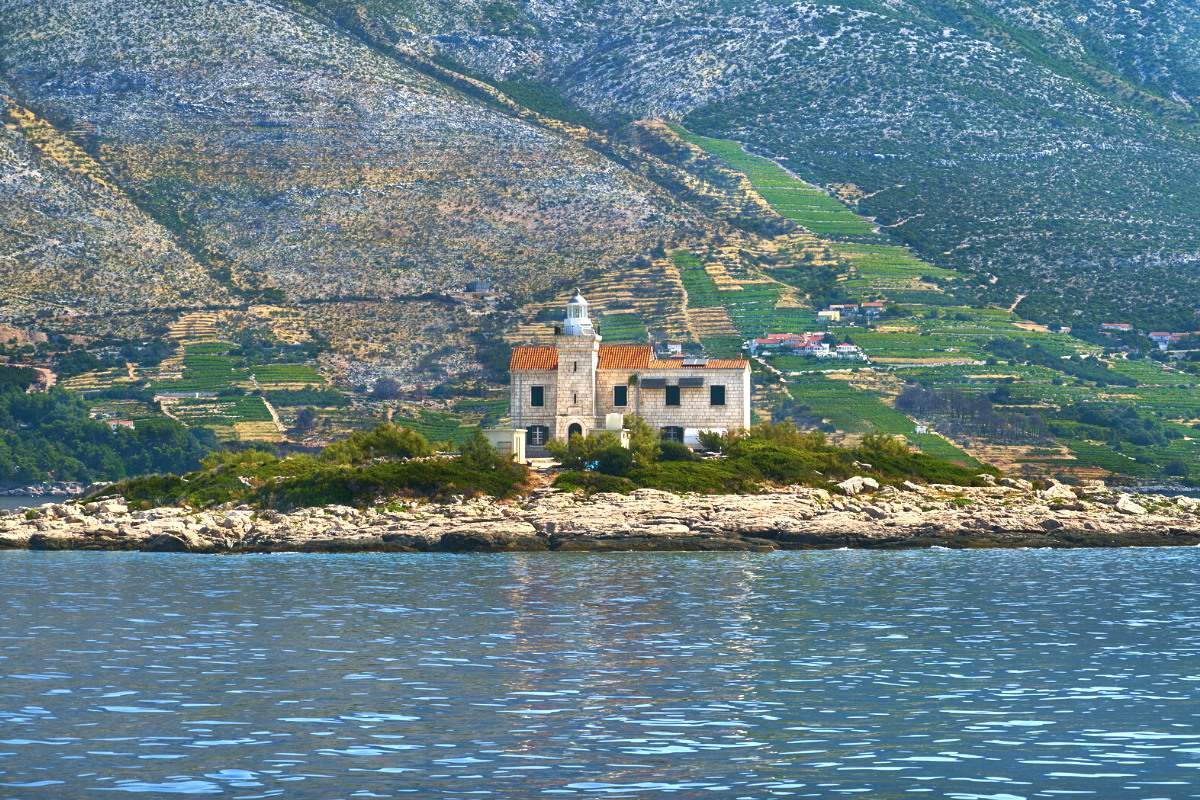
From Neolithic settlements to Roman olive groves and vineyards, Pelješac has a rich past. The Dubrovnik Republic significantly shaped the peninsula, building the strategic town of Ston and its impressive 5.5 km fortification system to protect valuable salt pans. For over five centuries, Pelješac flourished under Dubrovnik, becoming a major shipping center on the Adriatic. Today, you can still witness this history while enjoying the region's gourmet offerings.
Discover the Best Anchorages for Your Yacht
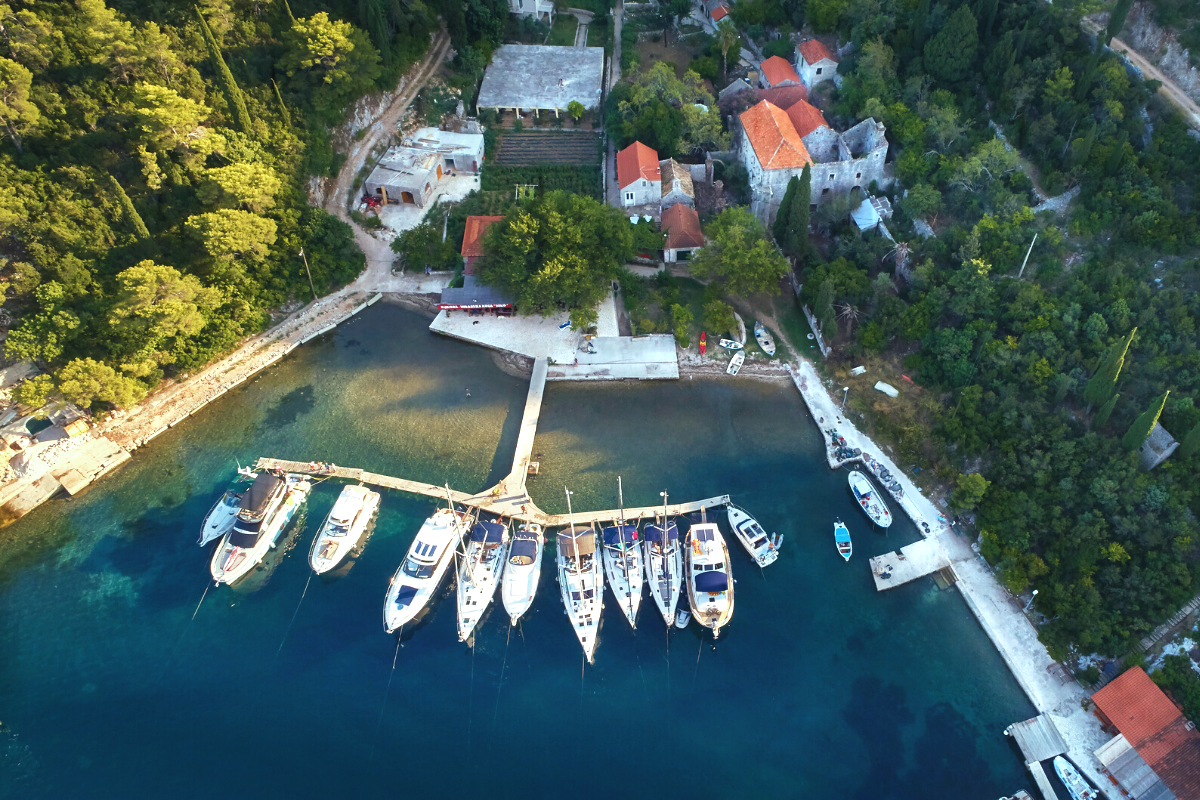
Marina Orebić: Located on the peninsula's southern coast is Orebić, Pelješac’s most populated town. A tourist resort in the summer months is also a mecca for family holidays. Its convenient location just opposite Korčula Island has also undoubtedly added to its tourism fame.
It’s no surprise then that Orebić boasts a year-round marina with 240 berths, with endless amenities for charter guests from shopping to supermarkets and a variety of traditional tavern-style restaurants.
Lovište: While Orebić is the easiest option, those of you looking to beat the heat and summer bustle should head to Lovište, said to be one of Pelješac’s best anchorages. A sheltered bay in the far north-western part of the peninsula is a favorite among fishers, and because tourism has trickled in, you can find a few shops, restaurants, and cafes, all while maintaining a hush holiday.
Trstenik Bay: Another well-protected pier and anchorage is Trstenik, which has increasingly welcomed yachts and tourist boats as word got out about this peninsula pearl. Not only does Trstenik offer breathtaking scenery, but you’ll find cafes, cocktail bars, restaurants, and markets onshore. Pro tip: this bay should be avoided if the southern ‘jugo’ wind blows!
Žuljana and Vučine: If you’re looking for the most pristine part of the peninsula, head to Žuljana and Vučine, located on the south side of Pelješac. Tucked into a steep valley and towered by tall mountains, this densely forested bay sails you in on glassy waters to offer an idyllic anchorage for your yacht holiday.
Indulge in Pelješac's Culinary Delights: Restaurants & Wineries
Pelješac was made for wining and dining, and there are a handful of restaurants and wineries you’ll need to check off your list while exploring the land.
Top Restaurants on Pelješac:
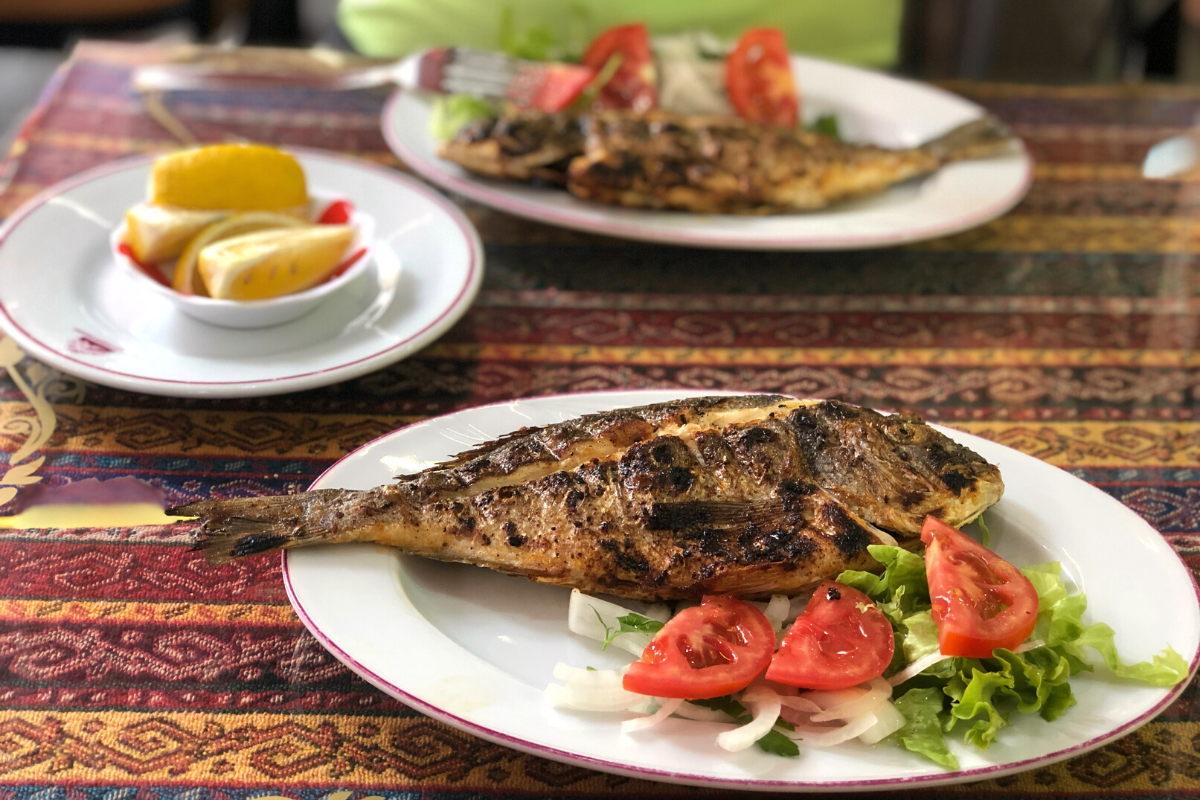
Ston: The ‘Captain’s House’ (Kapetanova Kuća) has been run by one of the oldest families on Ston since 1986. A culinary pioneer in the area, the Kralj family endeavors to bring Dalmatian recipes to the next level, set beneath the famous Ston walls and waterfront.
For a full-fledged oyster experience, head next door to Bota Šare, made famous in Croatia thanks to sister restaurants in Dubrovnik, Split, and Zagreb. However, the Ston location honors a 1000-meter radius food-to-table approach, according to 200-year-old recipes. And we promise you won’t find fresher oysters.
Konoba Bakus is another landmark for foodies in Ston, offering a fish-forward menu prepared to your liking.
Kobaš: Kobaš is a sandy bay with its own marina that is increasingly gaining the attention of international boaters. Located not far from the fishermen’s village of Ston, Kobaš restaurants are a dream for seafood-lovers thanks to seasonal menus that honor only the freshest local fare found that day. Whether you choose Lukas Tavern, Gastro Mare, or Niko’s Fish House, you won’t be sorry.
Drače: Tavern ‘Dalmatinska Kuća’ offers a fantastic view of the new Pelješac Bridge, but no-frills fish and meat dishes that honor Pelješac cuisine are really why you should visit.
Trstenik: Looking for lobster? Vitaceae in the town of Trstenik offers incredible seafood specialties overlooking the bay, with many visitors boasting it's the best meal they had on the peninsula! It’s also conveniently located next to Grgić winery so you can soak up the vino after a full day of tastings.
Orebić: Konoba Karako is a must if you are in the Orebić area. Honoring slow-food principles and, of course, seafood, Karako’s open grill and beach terrace setting complete your sailing vacation.
Top Wineries on Pelješac:

The Dingač, Postup, and Plavac Mali appellations rule the Pelješac terrain, with exceptional winery experiences that celebrate each variety.
Miloš: Not far from Ston in the village of Ponikve is Miloš, honoring the indigenous Plavac Mali grape, organically grown and aged in Slavonian oak barrels. The stone cellar is decorated with rustic wooden barrels, where you can taste red Plavac Mali, premium Stagnum, rosé, semi-sweet and sweet wines.
Matuško: Wine expert Mato Violić Matuško offers some of the best red wines from the sun-drenched slopes of Potomje. With Plavac, Dingač, Zinfandel, Postup, and Cuvee in its red repertoire, and Pošip, Graševina, Rukatac, Chardonnay, and Cuvee in its white, the Matuško cellar and oil mill are open year-round for tastings so that visitors can try their list of "champions" born in barrique barrels.
Grgić: Located in Trstenik, Grgić was founded in 1996 by Croatian-born Napa Valley winemaker ‘Mike’ Grgich, with two of Croatia’s best varietals at its core: Plavac Mali and Pošip. Vintner Hall of Fame inductee Grgić has taken his craft seriously over the yeara, receiving numerous gold medals and accolades for his wines produced in Croatia and California. This modern, sea-facing winery on Pelješac promises a premium tasting experience.
Korta Katarina: And when talking about premium wines, it’s impossible to pass up Korta Katarina, a Relais & Châteaux member Villa and winery that mixes Croatian vines with American roots. Located in Orebić at the base of Mount Sveti Ilija, Korta Katarina boasts a garden-covered terrace where you can enjoy a selection of their finest wines, from crisp Pošip to full-bodied Plavac, rosé, reserves, and everything in between.
Saint Hills: In the small village of Oskorušno is an epic winemaker’s tale marked on the slopes of Dingač. With the winery located in a renewed stone house, Saint Hills offers deluxe food & pairings and a tour through their treasury where all vintages are kept. Plavac Mali may have never tasted better.
Unwind on Pelješac's Beautiful Beaches
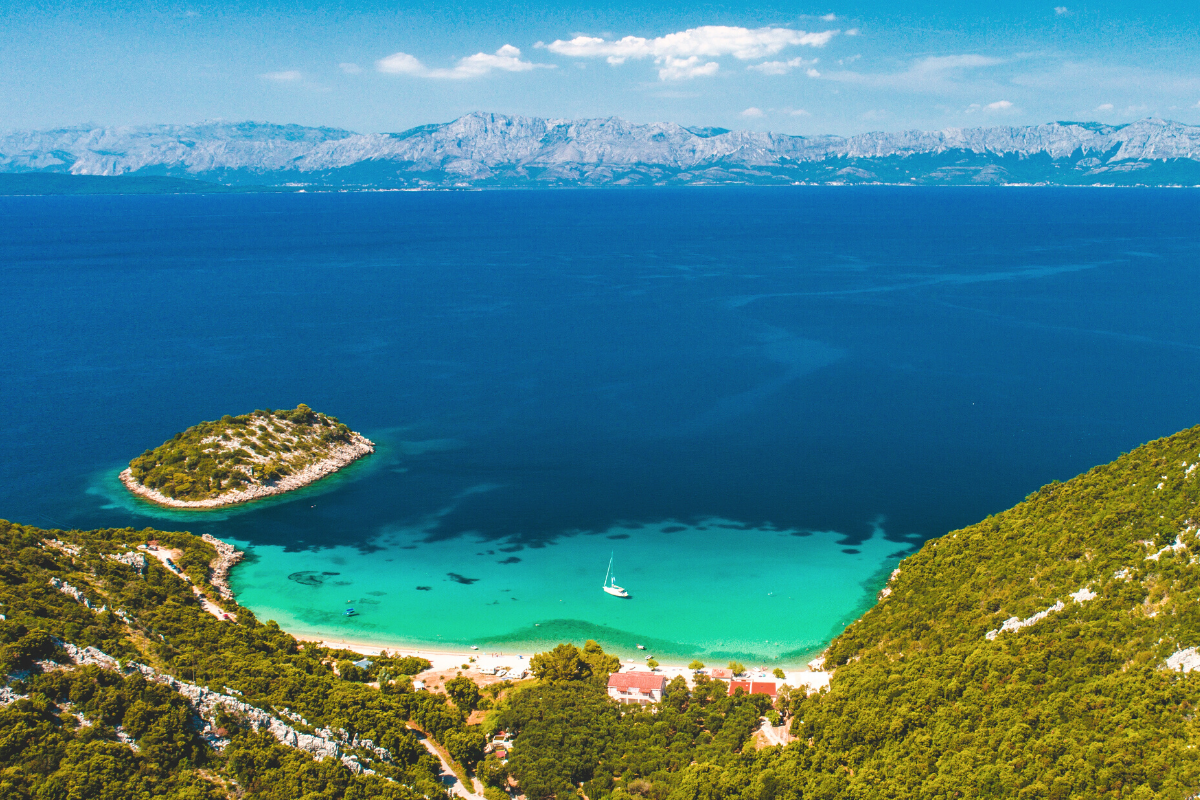
Prapratno: Just 3 kilometers west of Ston is one of the peninsula’s most breathtaking coves and is often considered one of the most beautiful beaches in the Adriatic. Where the dense forest meets a narrow sandy shore, Prapratno is sheltered by the pines and olive groves for an unmatched outing in nature.
Duba: The northern shores of Pelješac are home to some of the peninsula’s best beaches. Like Duba, for example, which sits below a small village of the same name. The 500-meter long pebble beach has nothing to offer in amenities, but we’re confident the pristine setting without the footprints of many tourists makes up for the convenience.
Divna: It already says a lot when a beach is named after its beauty, and Divna certainly lives up to its expectations of being extraordinary. Located 10 km south of Trpanj, Divna stretches across 200-meters, with a sandy-pebbled surface that illuminates the color of the sea. You can even swim out to the small uninhabited island that sits in front of Divna, but be sure to have some snacks handy, as this beach doesn’t offer much more than its stunning setting.
Must-See Attractions on Pelješac
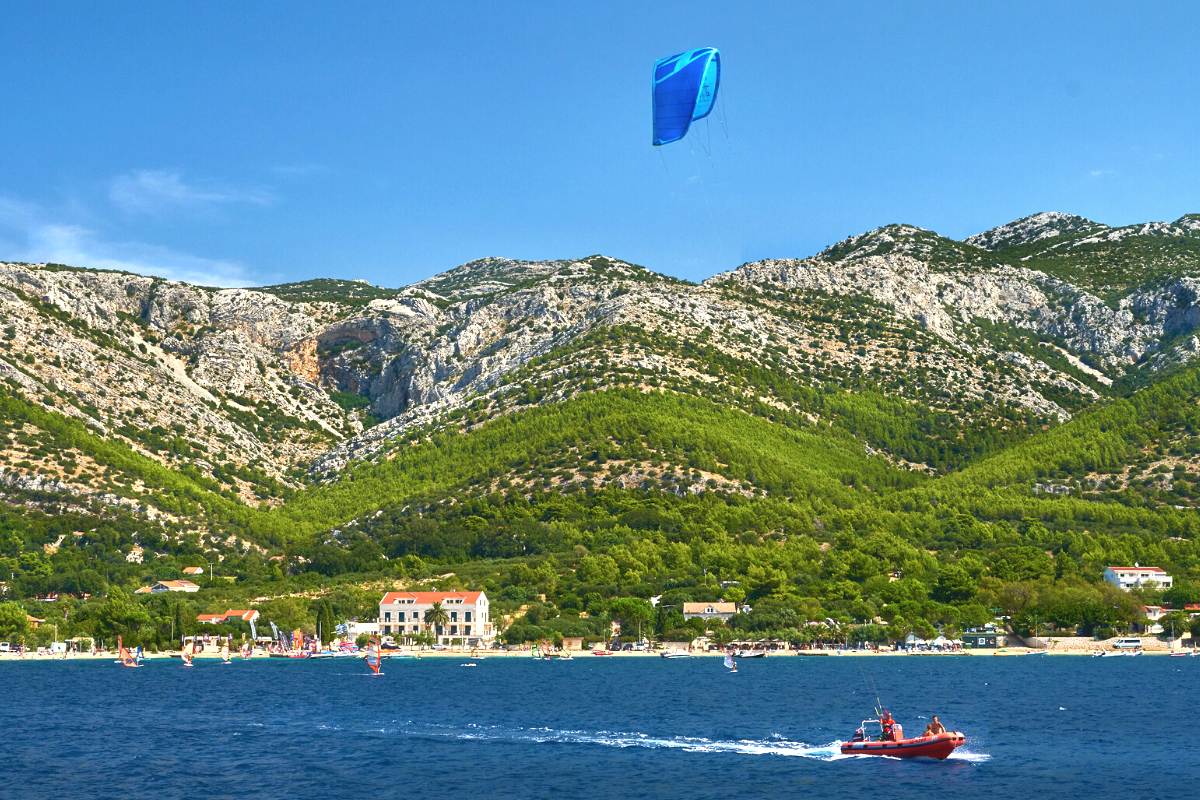
Ston: When visiting Pelješac, it's essential to fully experience Ston, connected to Mali Ston by the longest preserved stone wall (5.5km) in Europe, known as the European ‘Great Wall of China’. You can walk the walls in about 40 minutes, which were last used in the 19th century to defend the city and salt pans. Speaking of, did you know that Ston boasts the oldest saltpans in Europe and the largest preserved in the Mediterranean? This white gold has been a precious cargo of the area since the Middle Ages, and you can explore the history of salt production in the area first-hand!
Pro tip: And did we mention Ston’s rich oyster farming tradition, too?
Hike to Sveti Ilija: Those seeking a bit of adventure on dry land can hike to the highest point on Pelješac, Sveti Ilija. You can follow a marked trail from the abandoned village of Gornja Nakovana to finally reach the 961-meter-high peak in about two hours. Though the rocky terrain is not made for beginners, the panoramic view of the Adriatic from the top is the best reward.
Windsurf in Viganj: But hiking isn’t all active tourists enjoy on Pelješac. The southwestern part of the peninsula is home to Viganj, a small town with big winds to fulfill every windsurfer’s dream! Because it is ideally located on the narrowest part of the Pelješac Channel, winds range between 30 to 70 km/h, creating the best conditions for various watersports.
Book Your Pelješac Yacht Charter Today!
Ready to explore the unparalleled beauty and rich experiences of Pelješac? Contact us today to plan your unforgettable Croatia yacht charter. Our expert team will help you design the perfect itinerary, ensuring you experience the best of this stunning peninsula in ultimate luxury and comfort.
